#self sufficient
Text
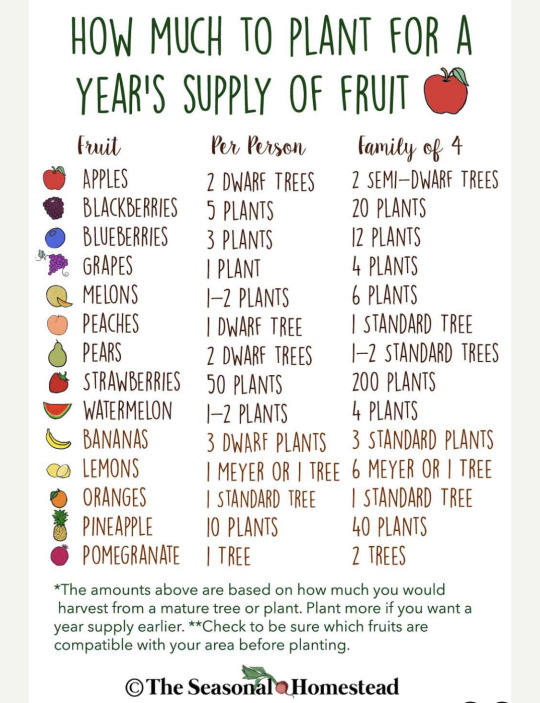
📸 The Seasonal Homestead
#homestead#garden#gardening#homesteading#self sufficient#self sustainable#urban farm#self sustainability#fruit#fruit trees#grow your own food
534 notes
·
View notes
Text
GARDENING UPDATE 1-11-2023
Front section
First update of the year! There hasn't been too much work done in the garden due to everyone getting sick and life in general.
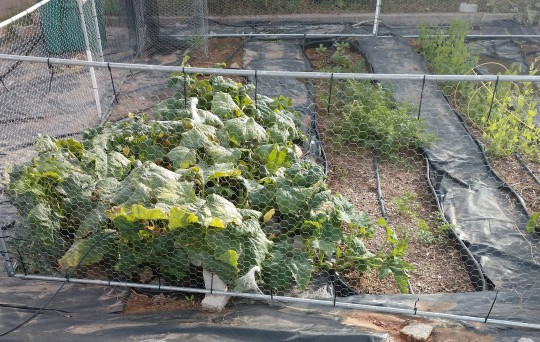
Row 1- Pumpkins! we 've finally gotten a pumpkin! I'll post a picture of it towards the end
Row2- carrots and radish. Carrots are sweeter in the winter due to turning starches into sugars

Row 3- the okra will be ready to harvest seeds soon, in front of it is the nasturtiums we planted. On the back side is peas.
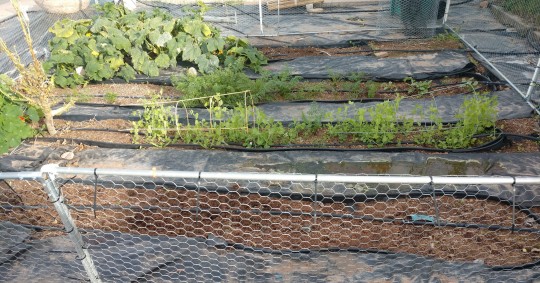
Full rows

Rows 4,3,2,1 from left to right
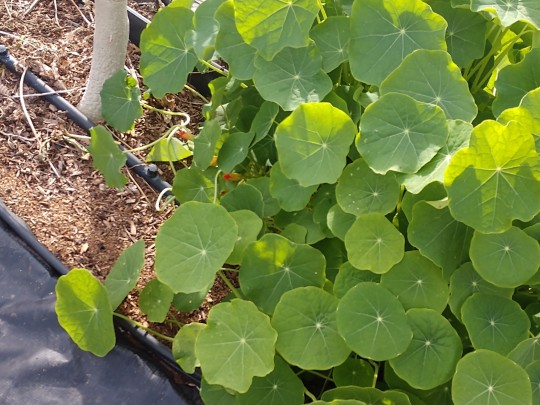
Close up of the nasturtiums the little red parts on the left side of the plant will be red blossoms in a few days!

The arrow is pointing at the pumpkin that's growing, it's our first one!
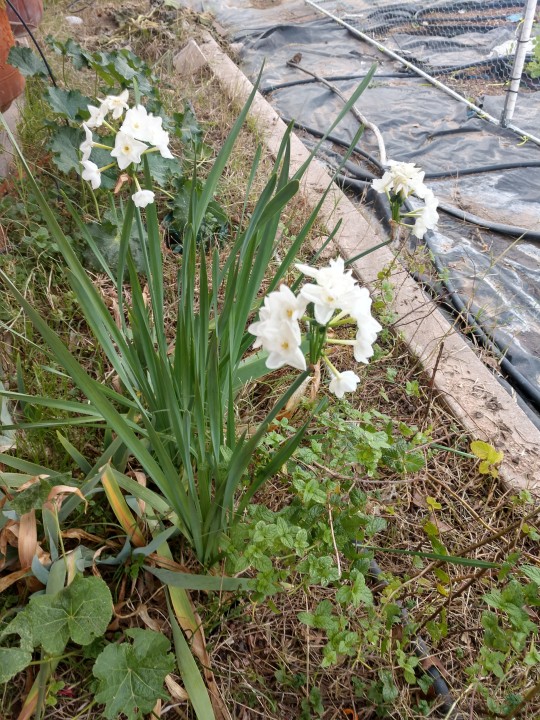
And the paperwhites are in blossom too!
#letsgogardening#gardening#urban homesteading#self sufficient#homesteading#self sufficient living#flowers#raised garden beds#garden#inthefrontyard#paper white flowers#nasturtium#pumpkin#okra#carrot#raddish#edible#edible plants#01112023#frontyardupdate#urban gardening
66 notes
·
View notes
Text
How to Properly Store Your Food Long Term
Storing Oats:
Oats are considered non-perishable, but they can go bad if not stored properly. To store oats for the long term, you must protect them from pantry pests, mold, oxidation, and bad smells. Here are some ways to store oats long-term:
Freezing: Freeze the oats before storage to kill any insect eggs. Store them in an airtight container to protect against moisture and…
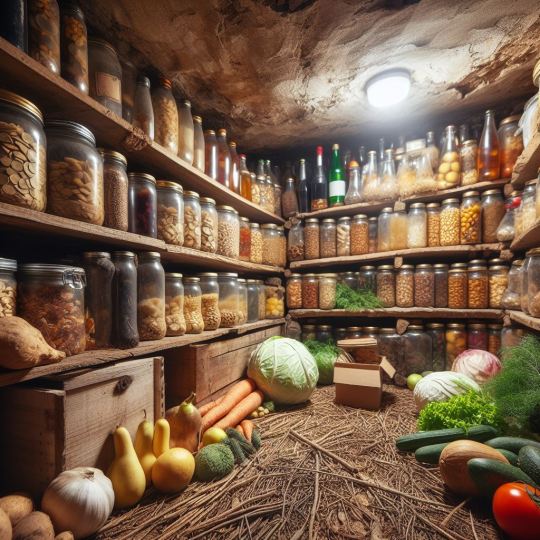
View On WordPress
#EmergencyPreparedness#author spiritwalker#collapse#food storage#homesteading#how to#long term food#off grid living#prepare#prepping#self sufficient#sustainable#WW3#WWIII
8 notes
·
View notes
Text
Designing A Traditionalist Commune
Inspired by chatting with @tradgirllife and @unprofessionalcat about this kind of thing and wanting to share my plans; this is going to be one long post.
Village Layout
Throughout, I will be presupposing a commune of c.100 families adding up to c.500 people. Also, because UK and US English sometimes use the same name for different plants and vice versa, all plants will also come with scientific names. Additionally, this is calibrated to the climate and ecology of Britain; adjust for where you live.
At the centre of the village is the church, which will also double as the meeting place for the village (this will be important later). It sits at the centre of 1000 acres of communally-held sheep pasture planted with clover, (trifolium pratense) dandelions (taraxacum officinale), yarrow (achillea millefolium) and maize (zea mays; this one is useful if the potato crop fails), with this same space including various other facilities - a printing shop, a blacksmith's, a stream for water and a glassworks. The dead are also buried here, with small, subtle gravestones.
Ringing that are houses (design will be discussed soon), each with an acre of land containing potatoes (peel helps feed chickens and a very dense, low-effort-to-prepare carbohydrate source), sweetcorn, beans and squash (the sweetcorn forms a trellis for the beans, the beans fix nitrogen for the sweetcorn and the squash helps both retain moisture) and carrots and onions (carrots ward off onion flies and onions ward off carrot flies), and a fruit grove with chickens (the trees provide the chickens with interesting insects to eat and that in turn keeps the trees pest-free). As for area, 4000 square feet (doubled to 8000 for paths and storage) will feed a single person on a vegetarian diet for a year. There are 43,650 square feet in an acre. 8000X5 = 40,000 for vegetables, with the remaining 3650 square feet being used for chickens and fruit.
Ringing that, in turn, is a forest of Himalayan birch (betula utilis) for firewood and writing material, Sitka spruce (picea sitchensis) for timber and resin/glue and white willow (salix alba) for baskets, painkiller and tannin (for leather-making) production with ponds containing tench (tinca tinca) and mallards (anas platyrhynchos) for meat and eggs (in addition, ground fish bones can be added to chicken feed). Ground shrubs will be similar to those in the sheep field.
House Design
Houses will be built out of straw bales, with a foundation of stones (to prevent damp seeping in), a coating of limewash (to add resistance to fire and water) and wooden cladding (to stop rain; Britain is very wet. Feel free to leave this out in a dry area). Straw bale building is cheap and (if you tie the bales tightly) very warm and surprisingly fire-resistant. However, I envision repairs and new houses leading to a gradual replacement with timber buildings. Rooves consist of a timber frame upon which is placed soil in which to grow herbs for consumption (for the UK I'm thinking oregano, yarrow, parsley, sage, rosemary and thyme). This will necessitate strong rooves with gentle slopes, but will be doable, and will increase cultivation space and take advantage of the UK's fairly high rainfall.
Inside, the centre of the house is a wood-burning stove over which the cooking is done. Surrounding that are chairs which people sit on to consume meals, with wooden bookcases (books are printed on birch bark, with charcoal-based ink, wool string and spruce resin for binding and a leather cover) and assorted ornaments. I'm a man, ornamenting houses isn't my thing - women and girls reading this, provide your ideas. Windows are fairly small due to local production limitations, and so there are quite a few of them. In winter, the house is lit with candles made from beeswax or tallow (so we'll want a few beekeepers) and reeds (from around the ponds), made by one of these processes.
To the side are bedrooms. These are fairly unadorned, consisting of a wooden bed, a mattress made from wool and/or feathers, a blanket and pillow of the same and some personal possessions. Also there should be a spinning wheel for the woman of the house to use.
To the back and just outside is the compost toilet. It consists of a wooden shack over a chamber for excreta and another chamber for composting. A bit of guttering funnels urine outside into a barrel of straw (also for composting). Washing is done in a metal tub, with soap made of animal fat or vegetable oil and wood ash.
Clothing
Clothes are made of wool, dyed with nettles (urtica dioica) for grey-green, dandelions for pale yellow, and whatever else is locally available. In addition, natural sheep colours give a range of white, grey, brown and black. Shoes will be made of sheepskin, and some people taking up shoemaking will thus be much appreciated.
In terms of clothing, I'm not particular about styles. I imagine that men will dress something like this and women something like this, but I am very much not particular. I'm a man.
Diet
As composed from the ingredients above, mostly potatoes accompanying vegetable stews of a considerable range. Some treats, such as pancakes, cider and meat, but mostly fairly plain.
Political System
The village is governed by two bodies - the magistrates and the assembly.
The magistrates consist of three randomly-selected adult citizens, with the proviso that they cannot have committed a crime in the last three years and they cannot serve consecutive terms. They meet weekly to judge crimes and set the agenda for the assembly.
The assembly consists of all adults of the community, meeting monthly to vote on proposed laws and actions and vote on applicants for citizenship. The citizenship can vote to modify proposed laws.
Due to the lack of state apparatus, crimes are punished by fines (for minor crimes, especially property crimes), exile (for major crimes - those who are exiled have their crimes, date of exile and sentence length tattooed on their non-dominant hands) or execution (for serious crimes, although this needs to be put up to the assembly and only violent or sexual crimes can be capital).
Note to say if you like this and/or would like to live here, reblog with any comments, questions or criticisms you have.
15 notes
·
View notes
Text

Make [Natural] Granulated Sugars from Honey, Fruits and Tree Saps
Honey/Honey Sugar is the only natural sweetener not made from plants.
Many fruits, trees and plants contain natural sugar. Sugars from flowers and plants are mostly gathered by bees to make honey.
Removing the moisture (by cooking or dehydration) from the sap/juice, then crushing the dry residue, produces granulated sugar to use for sweetening.
Maple Syrup & Sugar [Video 1] [Video 2] [Video 3] [Video 4]
Box Elder Sap/Syrup
Birch Tree Sap/Syrup
Making Apple Sugar (video)
[14-Point Emergency Preps Checklist]
[11-Cs Basic Emergency Kit]
[Learn to be More Self-Sufficient]
[The Ultimate Preparation]
[5six7 Menu]
8 notes
·
View notes
Text
Since I've been gone and computer-free for a while, it's only right that I make a life and plant update! I've been having the worst start with this year's plants, and I've been neglecting them for a while because it was making me a bit sour to see them all doing so bad; let's get into what happened.
So, since it's my fourth year of gardening, I felt super confident that I have leveled up so much that my plants will now grow however I please and that there will be no troubles whatsoever, which is just, a great mindset to start making mistakes in. So, I figured I'd wait until it's not freezing outside, and then, I would put all of the plants on my balcony, and they would have a lot of sun there, and that would make it easier for me to care for them. Before that, I've been keeping them in the kitchen during the night and morning, balcony in the afternoon. It's less work for me if they're on the balcony.
Well, it turns out, tiny baby plants do not do well on the balcony, even if it's not freezing outside! The temperatures were from 2-5 celsius during the night (that's 36 fahrenheit), and even if my plants didn't die, they started shriveling up, the backs of their leaves turning purple and dark. Seeing them turn dark and purple made me feel they were nitrogen deficient, because that has happened before, so I fertilized them all, thinking it would fix the issue - only it made the issue worse. Tiny plants cannot handle a lot of fertilization, they need to grow a bit before they're ready to be properly fed. So the result of this was that my most tiny and vulnerable plants burned out and died, most of just-transplanted tomatoes wilted, and basil died almost completely.
So, I finally realized that they actually disliked the cold of being outside, and brought them back in, and left them in the kitchen, where they had less light, but very warm, stable temperature. And, they all got better. It was almost like a weird mocking game from nature - if I had left them all in the kitchen, without ever taking them outside, they would have been growing consistently, and gotten twice the size already. I have been fooled by my arrogance. So why did all of the plants got sick and purple on my balcony?
Because the temperature of the soil affects what nutrients they're able to draw out. If it's too hot, or too cold, they won't be able to pull nitrogen out of the soil, even if there is plenty of nitrogen in! Same works with calcium, they need proper temperature and moisture in order to feed on it. Tiny plants do not take well to quick changes in temperature, they need to be bigger, and introduced gradually to colder nights. A month old plant can easily survive what a week old plant cannot. Only plants that are twice as big as their pot can easily bear thru cold nights outside without getting sick.
So, after this happened, I had a few happy accidents that I didn't count on, that cheered me up. There are 2 balcony windows that don't get a lot of light, but they're very warm (radiator underneath). I have left a few houseplants there, few lemons, and one cabbage, and forgot them completely. I didn't water them except maybe once every week. And somehow, without me noticing, tomatoes have started growing out of the pots with lemons, because apparently there were some seeds left in the soil there, and they quickly out-grew all of my carefully cared for tomato plants. Also that cabbage I forgot? It was the biggest most successful plant I had. I was in disbelief when I saw that, because, excuse me, I thought, you guys needed light to grow. Apparently, they cared more for the heat, and were happy to just get 2 hours of direct sunlight to grow. This went against everything I knew, but maybe I just needed to learn a new thing: sometimes warmth matters more. Next time I can just neglect bunch of plants on those windows and get successful plants with zero effort.
Encouraged by this, I was very careful this time to introduce my now bigger plants to the cold and bright balcony light, and this time I was listening to the rules carefully: First day only 1 hour in the direct sun, next day 3 hours, third day 5. Then they can stay overnight, and I only do it with plants that are big enough to survive minor damage. And it worked out perfectly. All plants held up well, and the last week of April, I've already started transplanting my tomatoes in the garden.
Another fun bit about me not being able to access laptop or my data, was that I could not check my own garden plan, that I made for this year. Planting the garden, I just had to figure out a whole new garden plan on the fly, which was absolutely hilarious. Me frantically typing on my phone 'can beans and strawberries grow together' while already holding a bag of beans in my hand, trying to decide where to dig the holes. Turns out, beans and strawberries DO grow well together, and since I have 3,5 garden beds of strawberries, I decided to plant beans in every one of them, just to see what happens. I have also stabbed large sticks in those gardens, and to an unknowing individual, who does not know about the beans, it might look as if I'm expecting my strawberries to climb up, which would be charming, and something to work towards in the future.
The strawberries are in full bloom and I want to spend hours just lying on the grass and looking at bees fertilize them. I felt so much yearning for the garden, so much of just wanting to be there all day and just watch life develop and grow.
After planting beans, I had a nagging feeling that I was supposed to plant something else and was forgetting about it, while I was ignoring all the plants due to feeling sulky, and I went to my box of seeds and took everything out to see what was not yet planted - to be immediately hit with a wall of shame: I had forgot to plant cucumbers and cantaloupes completely. And my poor mystery squash was also still in seed form. Now, these plants can grow very fast, and I started them right away and by now they're already developing their first leaves, so nothing is lost! This will depend on the climate. If we have a crazy hot summer with heat waves, my cantaloupes will not fare well, and I will have fewer cucumbers. If, by some chance, we have a bit more rain, some milder weather, maybe a storm every few weeks, then I might be looking at a good harvest anyway.
I had to starts all of my plants and plant my garden early, I planted everything about a month earlier than everyone else, because I know I will not be able to water my garden, and I'm counting on plants getting big and strong before the heat waves hit, and by then, they'll be mulched, covered, casting shade one over another in order to survive the heat. Last two years this worked brilliantly, and my garden was big and strong. I'm having high hopes this year as well, even as I started on rocky grounds, everything recovered so nicely, I even have a few basil plants looking good, brought back from the brink of death.
I've definitely spent more time outside, more time reading, writing, cooking, foraging and processing food, without access to computer. I've gathered so much bear's garlic, and found it's excellent in a pasta salad. I've eaten a full bowl of wood sorrel and came out just fine. I've tried to cook a soup with wild carrots - I would advise against using the roots, makes it taste very wrong. Almost got poisoned again because I confused young 'forget-me-not' plants with spinach and ate them in a sandwich; luckily I was fine. Laughed at myself a lot for that one. I saw lots of lizards, a frog, several deer, ducks, and a lot of birds in the forest, some very cool bugs as well. I sometimes run into other women in the forest and I feel like we're exactly where we're supposed to be, and we're ruling this land by protecting what's ours.
#plant update#gardening#transplants#growing food#self grown food#self sufficient#i will post pictures of the plants later#if i find the before and afters#i don't think i even took pictures of the sickly plants#i felt so bad lol#i have learned so much!!!!#and my garden will be beautiful#so many beans have been planted#hehehehehehe#i love beans so much
18 notes
·
View notes
Text




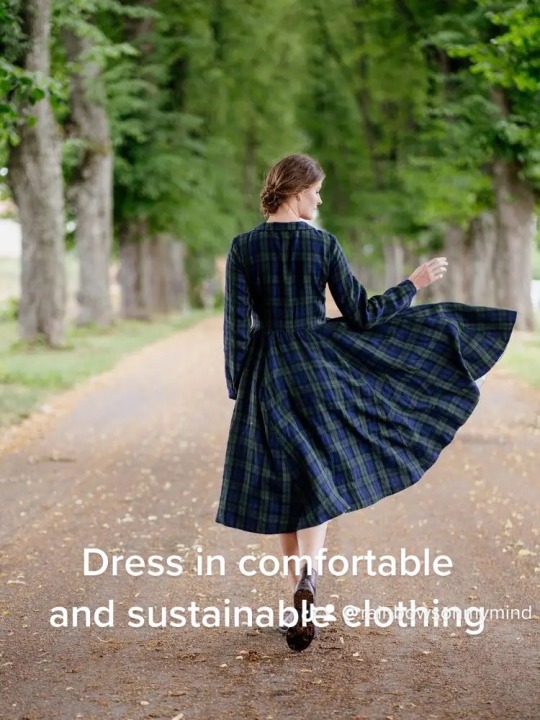

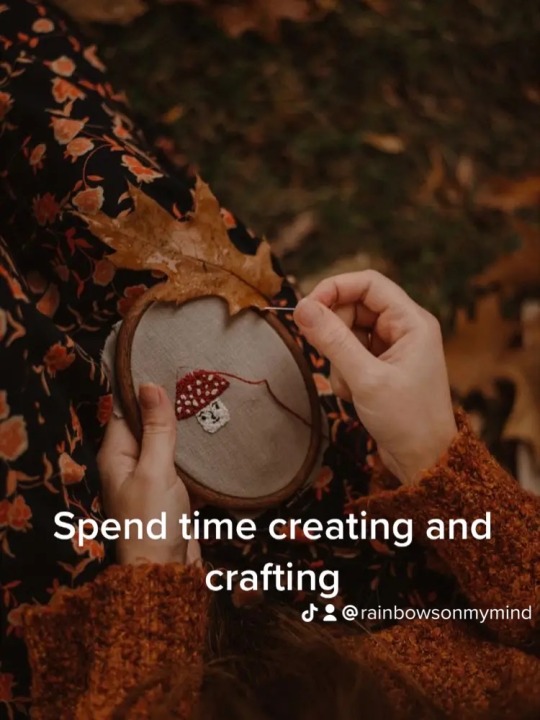


#sustainability#slow living#youtuber#grandmacore#naturecore#cottagecore#off grid#self sufficient#handicrafts#crafter#rainbowsonmymind#mountains#gardening#dream#goals#dream life
34 notes
·
View notes
Text

I made my own oat milk a few days ago and it is so good! This is my second batch and it’s incredibly easy to make.
1 Liter of water
1 Cup of oats
2 tbsp of honey or syrup for sweetness
2 tbsp of oil for fattener if you want something frothy in your coffee
1 Tsp of vanilla extract for flavor
And that’s all! You can add a pinch of salt if you like but I typically skip that one.
Blend that up for about 30 seconds and strain it and you’ve got oat milk
2 notes
·
View notes
Text
The Bajau people have been crisscrossing the waters of the Sulu Sea for centuries, the world’s only community of self-sufficient sea nomads. To the Bajau, a “border” is merely the farthest distance they can reach by boat. ...
Life for the Bajau became more complex in the colonial era when Malaysia, the Philippines and Indonesia created maritime borders in the Sulu zone: these frontiers were established in the Madrid protocol of 1885, without bothering to consider the distribution and diversity of the ethnic groups who lived there.
But it was the Malaysian Immigration Act of 1959/1963 that most significantly changed things for the Bajau. This legislation failed to distinguish between asylum seekers, refugees, irregular migrants and undocumented or stateless individuals. ...
As of 2023, only about 100 to 200 Bajau still live in the traditional “Lansa” houseboats near the eastern Malaysian city of Semporna. Lacking citizenship or formal rights to settle on the Borneo mainland, the Bajau of Philippine origins still preserve maritime hunting techniques passed down through generations. ...
Out in the vastness of the Sulu Sea, the Bajau stand as emblems of self-sufficiency, but once they set foot ashore they find themselves relegated to the lowest social class. Their stateless status deprives them of government privileges: the children cannot access public schools and adults are prohibited from finding formal employment.
8 notes
·
View notes
Text
Which way does your garden face?
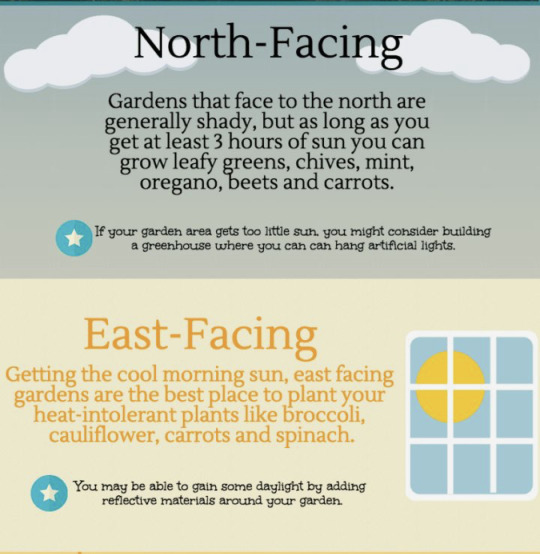

Ref: Youshouldgrow.com
#homestead#garden#gardening#homesteading#self sufficient#self sustainable#urban farm#self sustainability
154 notes
·
View notes
Text
Garden update 03/27/2023
I'll keep it short and sweet this week :)
Front part

Side view
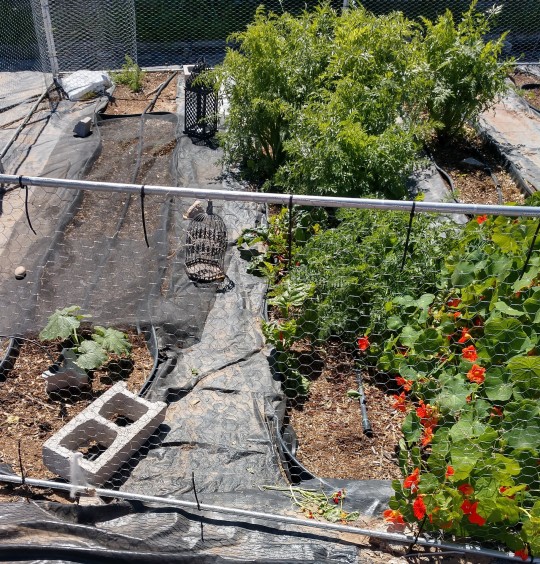
Row 1 = Corn and a left over pumpkin.
Row 2 = carrots and kale, some side spill of the nasturtiums

Row 3 = a carrot and nasturtiums
Row 4 = peppers closer to screen and the continuation of the lentil experiment started by @thestudentfarmer for soil amendments.

Side view from the otherside
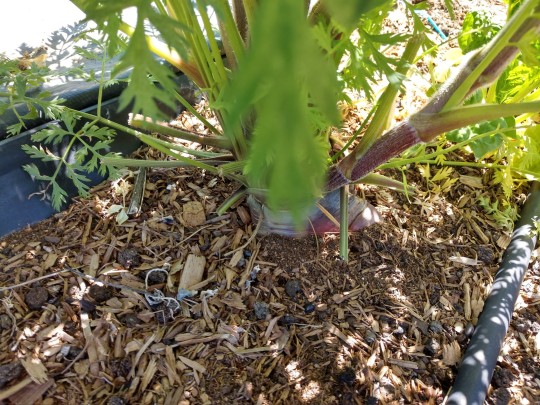
Close up of one of the carrots that we're letting seed
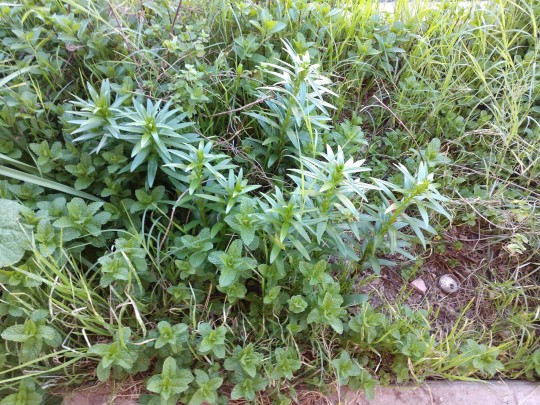
Some misc pics from the flower patch, these are Lilly's, mint and grass(we are slowly working on revamping this section)

Hollyhocks

Close up of the nasturtiums
We're in the process of revamping the back yard, when we start getting everything more put together I'll start updating with pics again!
#letsgogardening#gardening#urban homesteading#homesteading#self sufficient#self sufficient living#urban gardening#flowers#garden#raised garden beds#nasturtium#hollyhocks#mint#carrot#lentils#pumpkins#corn#thestudentfarmer#work in progress#garden update#growyourown#growbeds#frontyardupdate#03/27/2023
37 notes
·
View notes
Text
How to Start Your Own Off Grid Homestead in 2024
The first blog of the new year!
Are you tired of the hustle and bustle of the city life? Do you want to live a more simple, natural, and self-reliant lifestyle? Do you want to be more prepared for any emergency or disaster situation? If you answered yes to any of these questions, then you might want to consider starting your own off grid homestead in 2024.
Off grid homesteading is a way of living that involves producing your…

View On WordPress
#2024#author spiritwalker#books#download#homesteading#how to#natural living#off grid living#prepping#self sufficient#survival blog#sustainable
3 notes
·
View notes
Photo

Things I Wish I'd Known BEFORE I Started Prepping:
Don’t waste your time, money and energy by repeating the same mistakes many others have already made. Learn from our mistakes here.
PREPPING TIPS:
1. Your Supplies/Stockpiles Won't Last Forever! Do It Yourself; become more Self-Sufficient and less reliant on technology and commercial suppliers.
2. Start Living Below Your Means Right Now
3. Don't Blow All Your Money In The First Month. Proceed slowly with pre-determined goals.
4. Store Plenty Of Water (NOT In Old Milk Jugs)
5. Don't Buy Food Your Family Doesn't Eat
6. Store More Than Just Canned Food. Dehydrated foods last longer and lighter to carry if bug-out is necessary. Remember water to rehydrate.
7. Use Sturdy Shelves For Your Storage
8. Don't Put All Your Preps In One Place
9. There's More To Prepping Than How Much You Store (knowledge and skills)
10. Don't Forget About Hygiene and Sanitation
11. Don't Forget About Those With Special Needs (glasses, prescription meds, oxygen, wheelchairs, etc.)
12. Don't Forget About Your Pets
13. Don't Be The Only Prepper In Your Household (the entire family needs to be on board)
14. Don't Tell Everyone About Your Preps (when disaster strikes, you'll have a line of people at your door)
15. Stay In Shape (emergency situations can be physically exhausting)
16. Don't Assume Your Stockpile Of Guns And Ammo Will Keep You Safe (avoid confrontation and Learn how to be stealthy)
17. Have A Plan For Getting Home or Reconntecting with family/friends (you may not be there when disaster strikes)
18. Don't Make Assumptions About What Will Happen (have a plan A and a plan B or more)
19. Test Everything Yourself (Dont assume equipment will work properly when they are needed)
20. Take Baby Steps (they will quickly add up to a very long way and stop frustration)
21. Be aware of signs and indications that something bad is about to happen. Put your emergency plan in motion.
22. The End Of The World Isn't Tomorrow (technically it could be but enjoy all that life has to offer)
[Reference Link]
[14-Point Emergency Preps Checklist]
[11-Cs Basic Emergency Kit]
[Learn to be More Self-Sufficient]
[The Ultimate Preparation]
#prepare4tomorrow#prepper#survival#shtf#diy#selfreliance#self-sustaining#self sufficient#prepping#survivalist#bushcraft#hiking#camping
6 notes
·
View notes
Text
"There are, however, still some married couples who understand themselves as belonging to their marriage, to each other, and to their children. What they have they have in common, and so, to them, helping each other does not seem merely to damage their ability to compete against each other. To them, "mine" is not so powerful or necessary a pronoun as "ours".
This sort of marriage usually has at its heart a household that is to some extent productive. The couple, that is, makes itself around a household economy that gives some measure of economic independence and self-employment, a measure of freedom, as well as a common ground and common satisfaction. Such a household economy may employ the disciplines and skills of housewifery, of carpentry and other trades of building and maintenance, of gardening and other branches of subsistence agriculture, and even of woodlot management and woodcutting. It may also involve a "cottage industry" of some kind, such as a small literary enterprise.
It is obvious how much skill and industry either partner may put into such a household and what a good economic result such work may have, and yet it is a kind of work now frequently held in contempt. Men in general were the first to hold it in contempt as they departed from it for the sake of the professional salary or the hourly wage, and now it is held in contempt by such feminists as those who attacked my essay. Thus farm wives who help to run the kind of household economy that I have described are apt to be asked by feminists, and with great condescension, "But what do you do?" By this they invariably mean that there is something better to do than to make one's marriage and household, and by better they invariably mean 'employment outside the home.'"
- Wendell Berry, "Feminism, the Body and the Machine
3 notes
·
View notes
Text
Being Free, Preparing, and Divestment
Often when people talk about things like growing your own food, having physical copies of everything, having tools and medical kits, they're talking about prepping. As in, preparing for a collapse of civilization.
I'll admit I'm more partial to this reasoning than I used to be, it's definitely looking more possible every day. But this is preparation, instead of a way of living or being. It's easy to lose commitment to. It's also very similar to the hoarding of the selfish and greedy.
Another reason I see is to become self-sufficient, in some sort of Thoreau-esque way. I can respect the drive, but this too is impractical; Thoreau himself wasn't even as self-sufficient as he liked to paint himself. And again, this comes off as very individual driven.
Instead, I like to focus on divestment and mutual aid. Right now, my life is very entangled in corporations. The more I can provide for myself, the less I am reliant on them. I might be able to remove some from my life entirely, and at least minimize the impact of others. This creates flexibility for me. I can start looking at alternatives and jump to better options more easily. Additionally, if I get good enough at something to create a surplus, that surplus can go into my community and help them divest. If everyone does this, the only people we rely on is each other.
8 notes
·
View notes